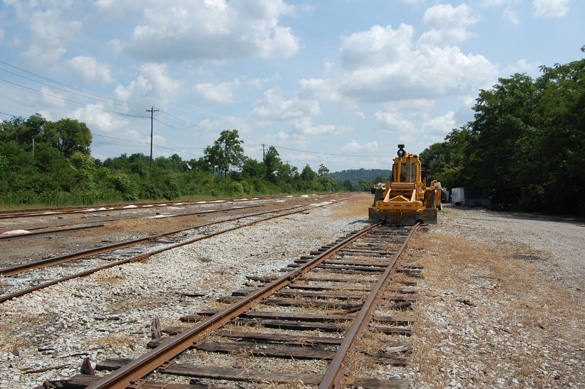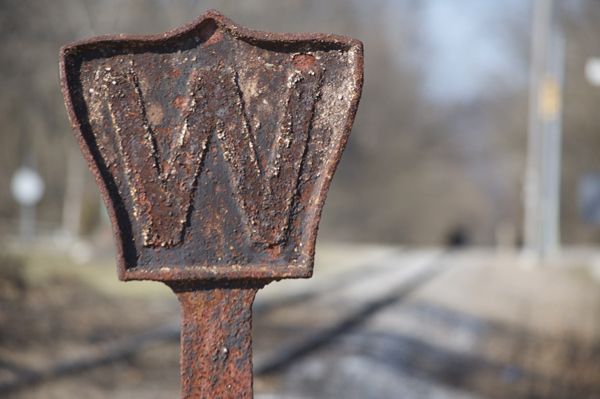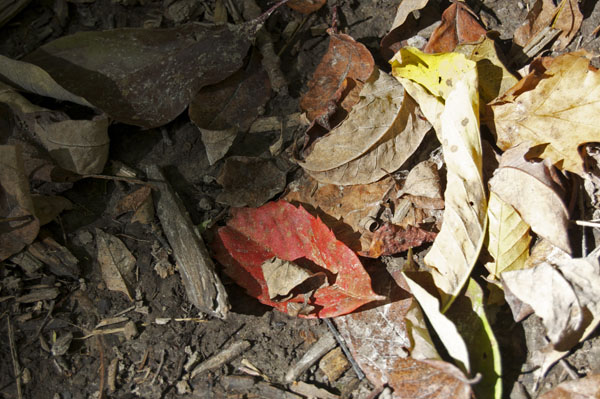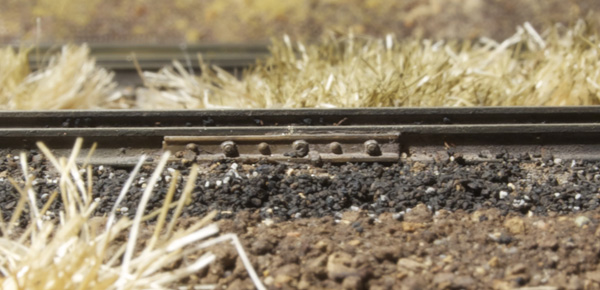If you look at a broad range of an artist’s work, you’ll likely see a consistent viewpoint. Perhaps all the landscapes are sweeping panoramas or intimate details viewed from close range. Both perspectives convey how the artist sees the subject matter.
It’s taken an embarrassing amount of time but I finally understand that the I & W is an expression of my artistic vision, as much as the photos above are. From the choice of modeling scale to the subject matter and the manner of expressing it, all are driven by a viewpoint that sees the world in a particular way. Much of my satisfaction with the recent changes to the layout are because they bring the layout closer to that vision.
I’m repeatedly drawn to the colors and textures seen in that rusted whistle post. These muted colors attract my attention as does the texture of the metal that one can almost feel when looking at the photo. I moved in close with the camera to capture the textures of the rust and could have moved in even closer to create an abstract pattern of color and texture like this photo of fallen leaves along a woodland trail. In addition to the color and pattern, the quality of the sunlight and shadow draws me to this scene. I like the contrasts between the monotone shadows and the colors in the light. These are the things I notice when I look at the world around me. Most folks just see a pile of dead leaves.
From a modeling perspective, quarter-inch scale is such a good fit for me because with it I can render the details and textures I visually respond to. HO scale became frustrating because modeling those details was harder, both in the effort required and in the visual payoff. Beyond a certain point, such details are simply too small to appreciate, even if I could reproduce them.
Similarly, I chose the late fall/early winter season for the color palette it provides. The siennas, ochres and tawny grays are all attractive to my eye and reproducing these colors on the layout is satisfying, even if the effort required to model leafless trees and other vegetation is greater in the larger scale. The thing to understand is this: once I realized how I looked at my modeling, I was able to take full advantage of that knowledge in my choice of modeling scale and layout design. My preference for an intimate, close-in viewpoint, made it easy to focus on a single scene rather than worry about how to fit in multiple scenes as I would have been tempted to with HO. Thinking back about how my designs kept getting smaller and narrower in depth, it makes absolute sense now. I was trying to understand and express my viewpoint without realizing it.
It’s speculation on my part but I wonder if much of the dissatisfaction people experience with this craft is due to a lack of understanding and clarity about their personal vision or perhaps, the choice of the wrong modeling scale to express that vision. A sweeping panorama in quarter-inch scale demands a great deal of space, while intimate details in N scale often require magnification to appreciate.
There’s much to this discussion and our understanding isn’t as thorough as it could be.
We default to defining a layout in terms of space, curve radii, turnout size and staging capacity, era and genre. While these are important to understand, they only scratch the surface of what we could accomplish if we looked beyond the technical criteria into more expressive realms. It’s like describing the Mona Lisa as a woman’s portrait painted on a wood panel. Accurate? Yes, but hardly descriptive of it’s transcendent power. Leonardo knew some things we could benefit from.
Regards,
Mike




Ah, so many visions, so little time…
Simon
Mike I must say that I am surprised at the opening admission, I would have thought it more of a fact than a choice on your part, once an individual is exposed to the world of art and has trained in its disciplines, it would take effort not to view the world from that minds eye and especially something as potentially creative as a model railway. For me your work has been an inspiration from the moment I first encountered it on the pages of OST and I was sad when you moved away from those inclusions. I use your track book as a ready reference along with all the photos of my railways style of track to get it right. Your choice to progress with the layout is just another step on the this path your call the craft. I can’t wait to see what happens when your take the next one.
David
Hi David,
Like many, I took my view of model railroading, layout design and other philosophy from the mainstream magazines. Over time I often wondered why I would find myself dissatisfied with my efforts. It took me a very long time to rid myself of that mainstream mentality and understand what it was I actually wanted to do with the work and how I approached it.
My approach isn’t for everyone. It isn’t for people who just want to play train or want easy solutions to everything. I encourage people to think for themselves and understand their motivations and choices. I’d have four times the readership if I told people how to lay flex track and do things the cheapest way possible. That ground is well covered already.
Mike